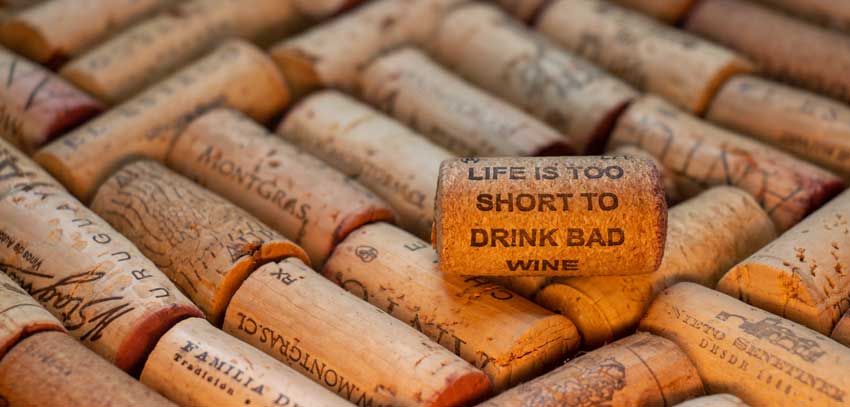How to Tell if Wine Has Gone Bad?
Table of Contents
Wine Faults and How to Find Them
There’s no worse feeling than opening a bottle of wine and finding out it’s gone bad. Wine has a long shelf life and generally stays in good shape for months and even years, but it is more delicate than you think.
Here’s how to spot spoiled wine and how to know what’s wrong with it. We can’t always avoid spoiled wine, but at least we can learn from it!
Oxidised Wine
Oxidation is the most common wine fault, and it happens when the wine is exposed to oxygen in the air, either in the winery or a bottle with a faulty closure. Oxygen changes the wine’s color and aroma, making it darker, and giving it nutty and bruised apple scents. Oxidation is unavoidable, but a closed bottle of wine shouldn’t suffer from it for many years. Once oxygen finds its way into the bottle, it ruins it, and even worse, it encourages the development of bacteria, sealing the wine’s fate.
Vinegary Wine
All vinegar comes from alcohol; wine or cider vinegar are good examples. And yes, your wine can and will turn into vinegar, eventually. Acetic acid bacteria are everywhere (even in bottled wine), and they feed on ethanol to produce acetic acid, AKA vinegar. Still, these microorganisms need oxygen to function, so if the wine is protected from the oxygen in the air, these bacteria are not a problem. Once acetic acid bacteria get going, they can’t be stopped. The good news? Slight vinegar scents are not always a deal-breaker. Many well-aged wines are a bit vinegary.

Cooked Wine
Wine is susceptible to heat, and heat damage is irreparable. When wine is exposed to feverish temperatures, as when you leave it in a hot car for a few hours on a sweltering summer day, the wine’s aromatic compounds change. Expect jammy and ‘cooked fruit’ aromas, along with scents of wine reduction sauce. Cooked wine is often oxidized as hot wine expands, pushing the cork out.
Sulfites in Wine
Sulfur dioxide (SO2), often known as sulfites, is a critical component in winemaking, as it is a natural antiseptic and antioxidant. Although almost all wines have some SO2, sulfur is barely noticeable in the glass. However, sometimes the sulfur concentration is too high and can be perceived as burned matchsticks, smoke, and even rotten eggs. Sulfur compounds can also be caused by reductive winemaking, in which wine is exposed to little oxygen during the process. Aerating or decanting the wine might eliminate these scents.
Bretty Wine
Brettanomyces is a wild yeast that sometimes finds its way into fermentation vats. These fungi produce unusual aromas often described as plastic, band-aid, medicine, or barnyard. Small concentrations of brett can be pretty pleasing, and you can find it in old-fashioned, old-world wines. Still, most of the time, brett ruins wine, and there’s nothing you can do to fix it.
How to Spot Spoiled Wine
Inspecting wine by looking, smelling, and tasting is not only a way to show off your wine skills but also a way to assess the wine’s quality and condition. Upon opening, one must taste all wines to see if they’re not faulty.
Sight. Sometimes, you can spot spoiled wine on sight alone. If murky, cloudy, fizzy (when not meant to), or just intensely orange or brown, there’s a big chance the wine is faulty. However, you’ll still have to smell it to determine if it is undrinkable.
Nose. You can spot most (if not all) wine faults on the nose. If you detect scents that are not fruity, floral, spicy, or earthy, there’s a chance they shouldn’t be there; therefore, something is wrong with the wine. Having said that, some wines are a bit faulty but still enjoyable — a subtle vinegar scent or hints of barnyard aromas are not necessarily off-putting.
Palate. The palate alone is not the most reliable indicator that wine has gone bad, as most faults are easier to spot on the nose. Still, you can detect vinegar taint, cooked wine, and bretty aromas on the back-palate retro nasally. Of course, if the wine is not right on the nose, don’t feel bad if you don’t want to taste it.
Now you know about the most common wine faults and how to spot them. We hope you never have to put this information into practice!
For more information on wine faults be sure to read: https://winefolly.com/tips/wine-faults/



